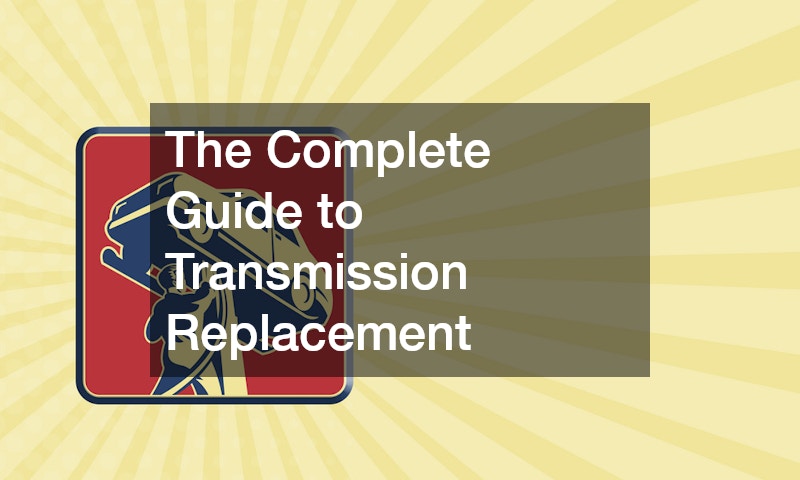Understanding transmission replacement is crucial for any vehicle owner, as it plays a vital role in maintaining the overall performance and longevity of the car. This guide provides comprehensive insights into identifying when a transmission needs replacement, the process involved, and the benefits of timely action. By the end of the guide, readers will be equipped with the knowledge to approach transmission issues thoughtfully and effectively.
How do I know if my transmission needs replacing?
Common Symptoms of Transmission Problems
One of the first indicators of transmission trouble is slipping gears, where the vehicle changes gears unexpectedly or struggles to stay in gear. Unusual noises, such as clunking or whining, also frequently accompany transmission issues, suggesting possible damage or wear. Additionally, rough shifting characterized by jerky or delayed gear changes serves as a red flag for potential transmission problems.
Sometimes, a noticeable burning smell may also arise from overheating transmission fluid, further highlighting the need for attention. Transmission fluid leakage is another critical symptom, as spots of red fluid beneath your vehicle can indicate a seal or gasket failure. Addressing these early signs can prevent larger, more costly issues from arising down the road.
Transmission Diagnostic Tests
Various diagnostic tests can pinpoint the specific issue with your transmission, starting with a comprehensive electronic scan. Mechanics use specialized software to read trouble codes that offer clues about the system’s condition. These codes can diagnose issues from fluid temperature anomalies to gear ratios, providing a digital overview of the transmission’s health.
A test drive can also yield valuable insights, allowing the mechanic to feel firsthand any slipping, hard shifting, or delays. This method helps simulate real-world driving conditions and provides immediate feedback. Coupled with this, a physical inspection allows for the illumination of external signs such as fluid leakage or worn components.
Consulting with a Professional
Seeking the expertise of a professional mechanic can save time and provide peace of mind when facing complex transmission issues. Professionals not only utilize sophisticated diagnostic tools but also bring experience to interpret complex data effectively. Their expert assessment ensures accurate identification of problems, preventing unnecessary repairs or expenses.
Acting on professional advice can often be a wise decision, as mechanics can provide targeted solutions like repairs or replacements. With their vast knowledge of various vehicle models and transmission systems, professionals can offer tailored advice that aligns best with your car’s specific needs. This guidance is invaluable in making informed decisions, especially when considering a costly replacement.
What are the steps involved in replacing a transmission?
Preparation and Safety Measures
Before starting the replacement process, it’s essential to gather all the necessary tools and replacement parts. Ensuring the vehicle is on a stable surface, with appropriate lifting equipment ready, helps prevent accidents. Clearing the work area of any obstructions is a crucial safety measure to facilitate smooth operations.
Disconnecting the battery is a primary step to avoid accidental electrical discharges. Safety gear such as gloves and goggles protects against potential hazards while working under the vehicle. Reviewing vehicle manuals or guides can also provide insightful tips specific to individual car models.
Removal of the Old Transmission
The removal process begins by detaching the components connected to the transmission, such as fluid lines and electrical connectors. Proper labeling during disassembly ensures reassembly accuracy. This meticulous approach allows each part to be replaced correctly once the new transmission is ready for installation.
Detaching the driveshaft is another critical step, requiring precision to avoid damage to surrounding elements. Handling the transmission with care, while lowering it from the vehicle, prevents mishaps and maintains other components’ integrity. Utilizing the appropriate lifting tools preserves the transmission’s condition and eases its removal.
Installation of the New Transmission
Before installation, inspecting the new transmission ensures it is free from defects and ready for operation. Applying anti-seize agents on bolts and linkage areas aids future maintenance and makes for easier installation. Aligning the new transmission unit with precision minimizes mechanical strain and allows smooth operation.
Proper transmission maintenance and timely replacement are fundamental to ensuring your vehicle’s reliability. Recognizing early symptoms of transmission issues and consulting professionals strengthen the course of action for preservation and functionality. Readers are encouraged to remain vigilant and proactive in addressing transmission concerns for enhanced vehicle performance.
.

